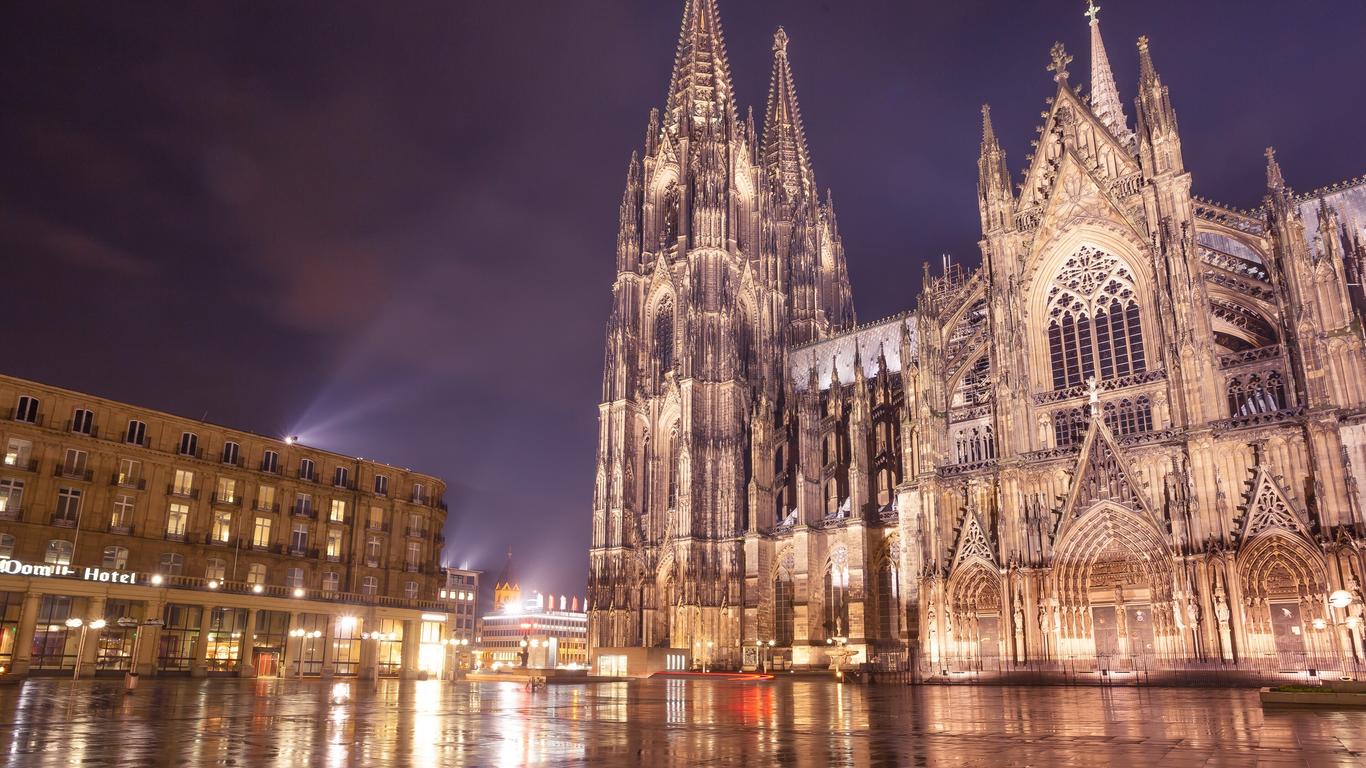Boasting the seat of the Archbishop of Cologne and a UNESCO World Heritage Site, the Cologne Cathedral is Germany’s most-visited tourist landmark. It is a magnificent example of Gothic architecture, with its Germanic spires the second-tallest in Northern Europe.
Prior to the construction of the Cologne Cathedral in 1248, it is believed that a Roman temple built by Mercurius Augustus once inhabited the site, followed by what is referred to as the “Oldest Cathedral”, commissioned by Maternus around the 4th century AD. A second church known as the “Old Cathedral” was finished in 818 but destroyed by a fire in 1248, with its demolition clearing the way for the Cologne Cathedral seen today. While the cathedral attracts many Christian pilgrims, visitors of all faiths come to admire its elaborate architecture and interior, with the visit by Pope Benedict in 2005 drawing the biggest crowds. It is planned in the shape of a Latin cross, with two aisles on either side which support its soaring Gothic vaults and 509 spiral stone steps leading to a 98-metre high viewing platform which offers magnificent views across the Rhine. Its black marble High Altar is one of its most magnificent interior features, with the “Coronation of the Virgin” detailed in white marble at its centre, while the “Shrine of the Three Kings” by artist Nicholas of Verdun is its most celebrated work of art. Other treasures of note are the Gero-Kreuz oak-carved crucifix, the oldest of its kind north of the Alps, together with the wooden sculpture “Mailänder Madonna” which is found within the Sacrament Chapel.
The Cologne Cathedral stands opposite the Breslauer Platz/Hbf railway station on the northern edge of the city centre, from where there are train connections to the city and other regional destinations. It also lies within easy walking and cycling distance to many of Cologne’s museums, landmarks and hotels.
Despite work beginning on the Cologne Cathedral in 1248, it was put on hold in 1473 and left unfinished until work recommenced in the 19th century, spurred by the discovery of its original plans and a renewed enthusiasm for the Middle Ages. While Cologne suffered extensive damage during the bombings of World War II and the cathedral suffered 14 hits in total, it remained standing and served as a navigational landmark for Allied pilots.





